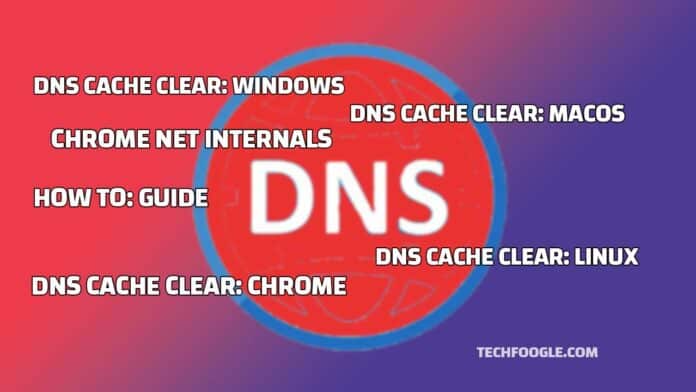Chrome, the popular web browser developed by Google, is known for its speed, security, and user-friendly interface. Behind the scenes, Chrome’s network architecture is crucial in delivering an exceptional browsing experience. In this article, we will dive deep into Chrome Net Internals to uncover hidden features and explore how you can leverage them to boost performance.
Table of Contents
Understanding Chrome’s Network Architecture
The Chrome Networking Stack
Chrome’s networking stack forms the backbone of its network operations. It consists of various components that work seamlessly to facilitate network communication. Understanding these components is essential for harnessing the full power of Chrome Net Internals.
Components of Chrome Net Internals
Network-related issues can be inspected and troubleshot using Chrome Net Internals’ powerful tools and hidden features. It provides detailed information about network requests, DNS resolution, caching, and WebSocket connections. You can gain valuable insights into the browser’s networking behavior by accessing Chrome Net Internals.
Exploring Hidden Features in Chrome Net Internals
Analyzing Network Requests and Responses
Chrome Net Internals enables you to examine network requests and responses with precision. By inspecting headers, payloads, and response codes, you can diagnose issues and optimize the performance of your web applications. Whether it’s analyzing the timing of network events or identifying slow-loading resources, Chrome Net Internals offers a comprehensive view of the network activity.
Inspecting DNS Resolution and Caching
DNS resolution plays a vital role in translating domain names into IP addresses. Chrome Net Internals allows you to explore the DNS lookup process and cache behavior. By understanding how Chrome resolves domain names and leverages caching, you can optimize DNS settings and reduce latency in your browsing experience.
Monitoring WebSocket Connections
It allows web browsers and servers to communicate in real-time, bidirectionally. Chrome Net Internals provides insights into WebSocket connections, allowing you to monitor their establishment, data transfer, and closure. This information can be invaluable when debugging WebSocket-related issues and optimizing real-time applications.
Leveraging Chrome Net Internals for Performance Optimization
Analyzing Network Performance Metrics
Chrome Net Internals offers detailed metrics on network performance, such as connection latency, data transfer speed, and resource loading times. By examining these metrics, you can identify bottlenecks and optimize your web applications for faster loading speeds and improved user experience.
Identifying and Resolving Network Bottlenecks
Network bottlenecks can significantly impact the performance of web applications. Chrome Net Internals helps you pinpoint these bottlenecks by providing information on network congestion, DNS lookup times, and resource loading delays. With this knowledge, you can optimize your application’s network architecture and reduce latency.
Optimizing TCP and SSL/TLS Settings
Transmission Control Protocol (TCP) and Secure Socket Layer/Transport Layer Security (SSL/TLS) settings are crucial in network performance and security. Chrome Net Internals allows you to tweak these settings and analyze their impact on your browsing experience. Optimizing TCP congestion control algorithms and fine-tuning SSL/TLS configurations can enhance both performance and security.
Enhancing Security and Privacy with Chrome Net Internals
Identifying and Blocking Malicious Network Activity
Chrome Net Internals provides insights into network connections, including the ability to detect and block malicious activity. By monitoring suspicious network requests and examining certificate information, you can identify potential threats and take appropriate measures to safeguard your browsing experience.
Mitigating Privacy Risks with Secure Connection Settings
Modern digital technology creates a growing concern about privacy. Chrome Net Internals offers a range of secure connection settings to protect your data and privacy. By inspecting certificate details, validating secure connections, and configuring privacy-enhancing features, you can mitigate privacy risks and ensure a safer browsing experience.
Clearing DNS Cache in Google Chrome
To clear the DNS cache in Google Chrome, follow these steps:
1) Create a new tab in your Google Chrome browser.
2) In the search box, type the following URL: chrome://net-internals/#dns.
3) Once you’ve entered the URL, you will be directed to the DNS settings page in Chrome.
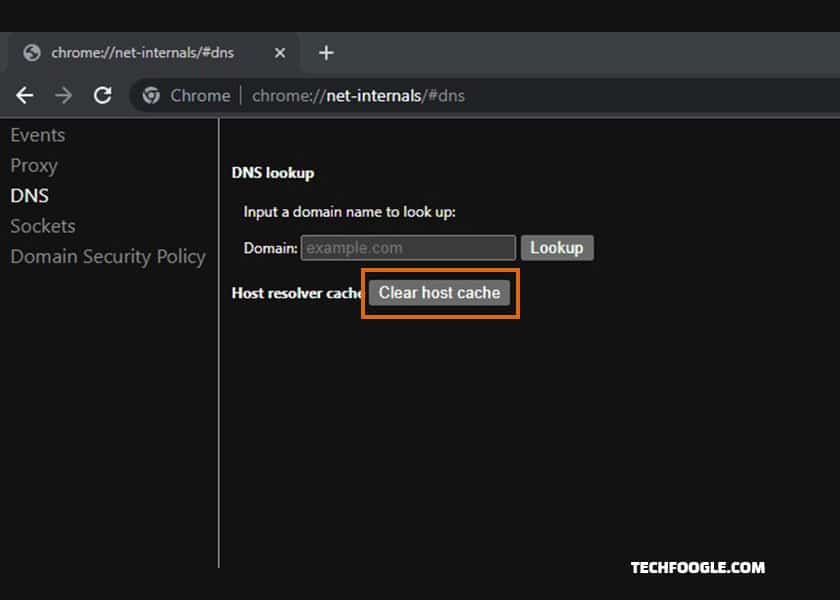
4) Look for the “Clear host cache” button and click on it.
5) By clicking this button, you effectively flush out the DNS cache in Google Chrome.
6) Now, it’s time to flush the socket pools as well. Open another tab in Chrome.
7) Type the following URL in the search box: chrome://net-internals/#sockets.
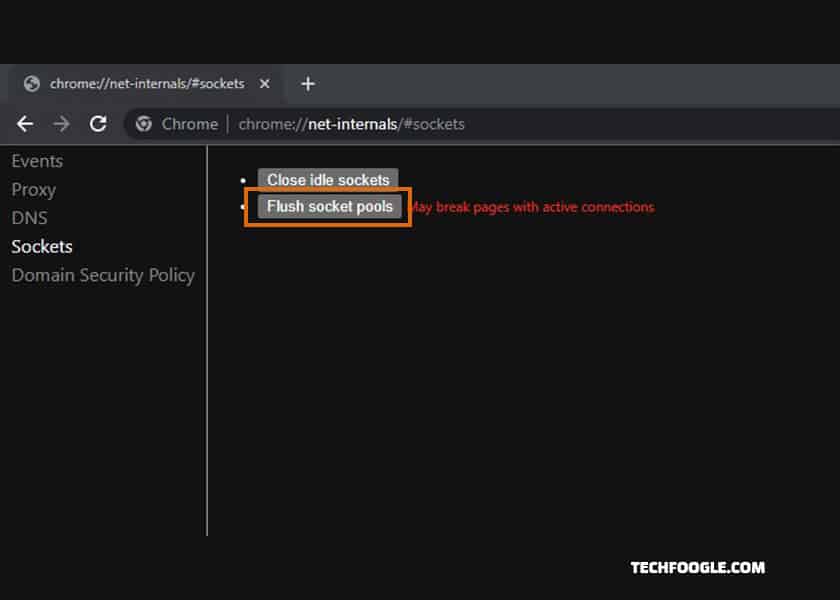
8) On the socket settings page, locate the “Flush socket pools” button and click on it.
9) Congratulations! You have successfully cleared the DNS cache and socket pools in Google Chrome.
10) It ensures the changes take effect, and it’s recommended to close the Google Chrome tab and reopen it.
(Also see: How To Download and Play Roblox on a Chromebook)
Clearing DNS Cache in Windows 7/8/10/11
If you’re using Windows 7, 8, 10, or 11, follow these steps to clear the DNS cache:
1) Press the Windows Key on your keyboard.
2) In the search bar, type Command Prompt.
3) Right-click on the Command Prompt application and select Run as Administrator.
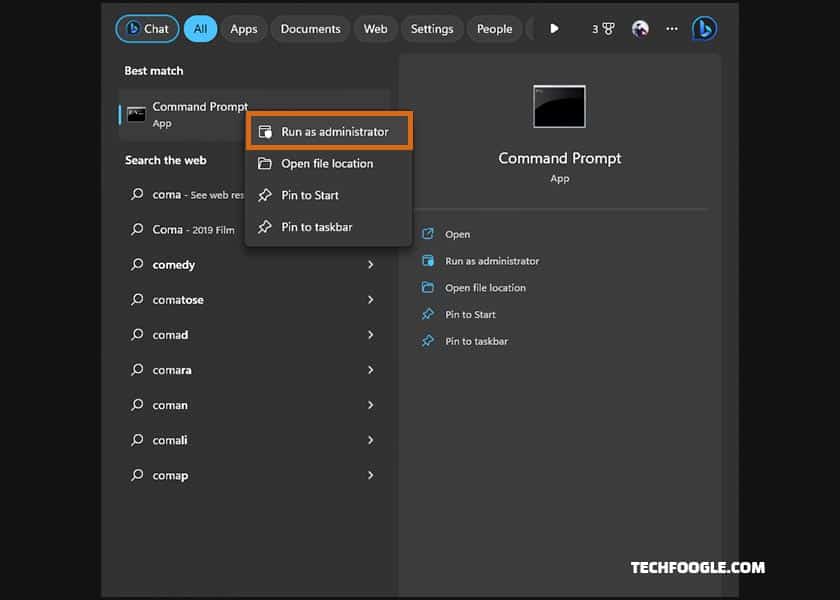
4) It will open the Command Prompt with administrative privileges.
5) In the Command Prompt window, type the following command:
ipconfig /flushdns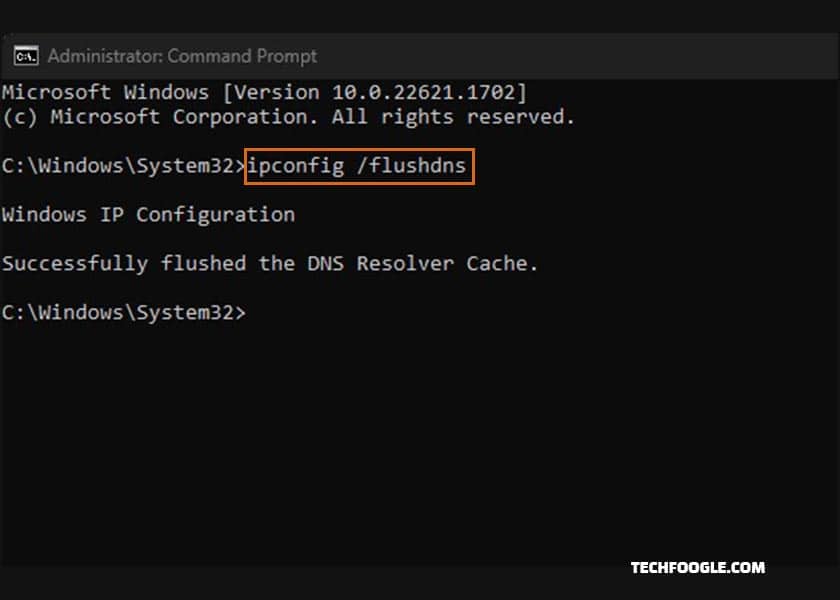
6) Press Enter to execute the command.
7) Once the DNS cache is cleared, you can use the ipconfig command to verify the cache has been successfully flushed.
Clearing DNS Cache in Linux
If you’re using a Linux distribution, use the following steps to clear the DNS cache:
- Open the terminal on your Linux system.
- Enter the appropriate command based on your distribution to restart the network-manager service with administrative privileges. For example, you can use the following command with sudo: sudo service network-manager restart.
Clearing DNS Cache in macOS
For macOS users, follow these steps to clear the DNS cache:
- Launch the Terminal app on your macOS system.
- In the Terminal window, type the command: dscacheutil -flushcache.
- Press Enter to execute the command.
- Additionally, you can kill all mDNSResponders by using the following command with sudo: sudo killall -HUP mDNSResponder.
Verifying DNS Cache Flush
After clearing the DNS cache, verifying if the flush was successful is essential. Here’s how you can do it:
- On Windows, Linux, macOS, or Unix systems, use the nslookup command in the terminal.
- Test DNS resolution by entering the command nslookup yahoo.com or nslookup nixcraft.com.
- Unix users can also use the dig or host commands to check DNS resolution. For example, dig techfoogle.com or host www.techfoogle.com.
- Visit websites like Google.com to ensure proper DNS resolution.
Clearing or flushing the DNS cache in Google Chrome can help resolve outdated or incorrect DNS information issues. By following the provided steps, you can easily clear the DNS cache in Chrome and on different operating systems such as Windows, Linux, and macOS. Verifying the DNS cache flush ensures that your browser retrieves accurate and up-to-date DNS information, leading to a smoother browsing experience.
Conclusion
Chrome Net Internals is a powerful toolkit that unveils hidden features and empowers users to optimize network performance, enhance security, and protect privacy. By exploring the various components and leveraging the tools provided, you can gain valuable insights into Chrome’s network architecture, analyze network requests and responses, optimize performance, and strengthen security measures. Utilize Chrome Net Internals to unleash the full potential of your browsing experience.

